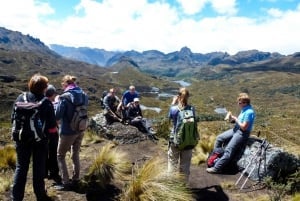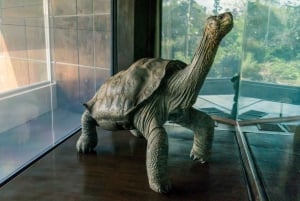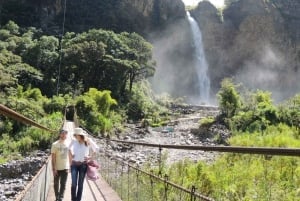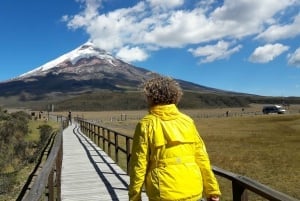Weather Overview
Ecuador has different climates and micro-climates, depending mostly on altitude and geology, and two seasons, the winter or rainy season and the summer or dry season. The times of the year for each vary slightly by region. Because there aren't big weather variations during the year, any time is good to visit Ecuador. In the Andean region, the temperature ranges between 10°C and 22°C (50°F and 72°F) during the year. In the rest of the country the temperature is between 21°C and 32°C (73°F and 90°F), with extremes that rarely exceed 36°C (97°F) or drop to less than 20°C (68°F). Nevertheless, there's a high probability of getting some rain during the dry season, or getting some sunshine during the wet season. So keep these varying conditions and micro-climates in mind when packing. Because of its location on the equator, Ecuador experiences no variation of daylight hours throughout the year; both sunrise and sunset occur at 6:00 o'clock each day (or up to 15 minutes later).
Scroll down to the bottom of the page for a more detailed description of the weather in each region.
The Weather Throughout The Regions

The Andean region, consisting mostly of highlands, is cold, with temperatures varying during the day ("you can experience the four seasons in one day") and a great deal of sunshine due to the high altitude and the proximity to the Equator, so it is essential to use sun protection. It rains from October to November and from January to May, usually in the afternoons. If you want to do outdoor activities, like mountain climbing, trekking, and excursions, the best time is the dry season, from June to August. You will get the best views and photographs in the mornings, when the sky is clear. Our best advice when visiting the Andean region is to dress in layers.
The climate of the Galapagos Islands is heavily influenced by the cold Humboldt current and is one of the healthiest and most pleasant in the world. During the dry season, from June to December, it is cool and windy with chances of day or night "garúa" (light drizzle). Marine life is the most active at this time of the year, and thus you will get the best submarine sights; the action in turn attracts seabirds, penguins, albatross, and sharks. Between January and May, the wet and warm season, heavy and short rains are frequent. This is the mating season for land birds and sea lions, and the turtles’ nesting season; the sea lion pups are born in April. Waters are calm, making snorkeling and scuba diving easier, with the best visibility between January and March, but poor marine life.
Galapagos Weather

The Amazon region is hot and it rains heavily throughout the year, the heaviest being between June and August. The temperature is quite constant, around 24°C (75°F) year-round, but the high humidity gives a higher temperature feeling.
The Coast region is warm and humid as well, but it cools down from July to November during the dry season, with average temperatures of 23°C (73°F); from December to April, it rains constantly with the highest temperatures of the year, up to 30°C (86°F). The southern coast, specifically the waters of Puerto López and Machalilla National Park, are hotbed for breeding humpback whales between late May and October, a must-see in Ecuador.

A Humpback Whale near Puerto López (photo by David Chang)
 27 °C
27 °C
 light rain
light rain light rain
light rain light rain
light rain light rain
light rain light rain
light rain light rain
light rain light rain
light rain moderate rain
moderate rain light rain
light rain light rain
light rain light rain
light rain light rain
light rain moderate rain
moderate rain moderate rain
moderate rain light rain
light rain moderate rain
moderate rain light rain
light rain light rain
light rain overcast clouds
overcast clouds overcast clouds
overcast clouds broken clouds
broken clouds overcast clouds
overcast clouds light rain
light rain light rain
light rain broken clouds
broken clouds broken clouds
broken clouds broken clouds
broken clouds broken clouds
broken clouds overcast clouds
overcast clouds overcast clouds
overcast clouds broken clouds
broken clouds broken clouds
broken clouds overcast clouds
overcast clouds overcast clouds
overcast clouds overcast clouds
overcast clouds










